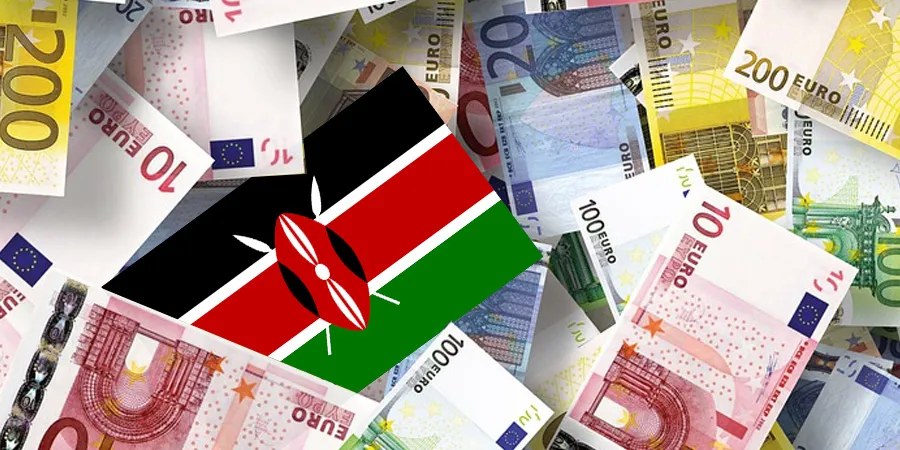Kenya Buys Back Debt and Buys Time on Credibility
Kenya’s US$1 billion Eurobond buyback of its 2028 notes marks a bold test of frontier-market discipline. Swapping short-term pressure for higher long-term yields, Nairobi signals credibility—but at a rising cost in global capital markets.

Kenya’s latest foray into the international debt market—a US$1 billion buyback of its 7.25% Eurobond due February 2028—is both a calculated act of fiscal management and a high-stakes signal to investors watching frontier sovereigns recalibrate their external obligations. The tender offer, launched this week, allows holders to sell at US$1,037.50 per US$1,000 of principal plus accrued interest, with settlement contingent on a new bond issuance expected to price in the coming days.
On paper, the move marks a step toward liability management maturity: redeeming near-term obligations early to smooth the country’s repayment profile. But beneath the choreography lies a more complex narrative—one where liquidity constraints, political optics, and market credibility intersect.
Kenya’s external debt service load remains heavy. The government faces US$2.0 billion in Eurobond redemptions by 2028, alongside rising domestic refinancing costs as local yields hover above 17% on 10-year Treasuries. The buyback targets the most market-sensitive maturity—February 2028—which investors have been watching as a gauge of Nairobi’s refinancing ability since Ghana’s and Ethiopia’s debt crises rattled frontier spreads in 2023–2024.
From a market-structure standpoint, the timing is strategic. Kenya’s sovereign curve has been volatile: the 2028 bond (ISIN XS1771886554) traded near 93 cents on the dollar in mid-2024 but rallied to 102–104 after the government completed its US$1.5 billion Eurobond issuance in February 2025, proving it could regain market access. The current buyback effectively capitalizes on that credibility rebound—retiring debt at a manageable premium while signaling fiscal confidence.
Still, there’s no free lunch. Paying above par introduces a cash cost estimated at US$37.5 million, excluding fees. Moreover, the new issuance that will finance the buyback—likely a 10-year note—will come at higher coupons, around 9.0–9.5%, based on secondary-market pricing of Kenya’s 2032 Eurobond (ISIN XS2433952104). That’s roughly 175 basis points higher than the retiring bond’s coupon. In short: Kenya is swapping near-term liquidity risk for higher long-term debt-service obligations.
For investors, the transaction’s success will depend on participation rates. If less than half of outstanding holders tender, the buyback risks being perceived as optical—designed for headline reassurance rather than balance-sheet relief. If take-up exceeds 60%, markets will read it as a genuine deleveraging effort.
The move also highlights Kenya’s growing sophistication in sovereign debt management compared to its African peers. Ghana remains in IMF-led restructuring talks, Nigeria’s Eurobonds (NG2031: XS2433952104) trade near 11.5% yields, and Egypt’s (EGYP2032) hover around 9.8%. Kenya, by contrast, continues to actively manage maturities within market access rather than via distress negotiations. For global funds tracking the JPMorgan NEXGEM Index, that distinction matters—it determines portfolio weightings and sovereign-risk premiums.
However, the buyback also underscores the limits of frontier fiscal resilience. Kenya’s foreign-exchange reserves stand near US$8.1 billion, covering 3.7 months of imports, while the shilling (USD/KES: KES=) has stabilized around 128.50 per dollar after sliding nearly 20% last year. The central bank has paused its rate hikes at 13.00%, prioritizing currency stability over stimulus. The fiscal deficit, still around 5.4% of GDP, leaves narrow space for debt redemption without new borrowing. Hence the buyback’s financing structure: it relies on new external issuance, not spare reserves—essentially refinancing through markets rather than cash-funded prepayment.
For global fixed-income investors, the message is twofold.
First, Kenya is asserting market re-entry credibility—a crucial differentiator from peers that lost access. Second, the country is acknowledging that it remains dependent on favorable sentiment and liquidity windows. Any deterioration in global risk appetite—such as higher U.S. 10-year Treasury yields (US10Y: ^TNX ≈ 4.35%) or a stronger dollar (DXY ≈ 105.8)—could quickly reverse the rally in Kenya’s paper.
At a macro level, the buyback also fits into the IMF’s preference for pre-emptive debt reprofiling. Kenya’s IMF Extended Credit Facility (ECF), renewed through 2026, includes provisions encouraging active debt management and non-concessional borrowing within sustainability parameters. The optics of a voluntary buyback align with IMF conditionality, projecting confidence without breaching program ceilings.
From a regional capital-market perspective, the transaction could serve as a template for proactive refinancing. Countries like Côte d’Ivoire, Senegal, and Angola—each facing maturities post-2027—are monitoring the outcome closely. A smooth Kenyan buyback could reopen investor appetite for Sub-Saharan African sovereign debt, which saw net outflows exceeding US$4.2 billion in 2024, according to EPFR data.
Yet, execution risks remain. Tender participation depends on global liquidity and the new issue’s yield spread. If the buyback is underfunded or under-subscribed, it could backfire—signaling that Kenya’s market window is narrower than officials claim. Moreover, the country’s growing reliance on external markets, amid a still-fragile fiscal position, could rekindle concerns about debt sustainability beyond optics.
For now, Kenya’s authorities appear to be managing the balance skillfully. The buyback will modestly reduce refinancing risk, improve the yield curve, and extend duration, all while maintaining IMF alignment. Still, the premium pricing and higher coupon costs illustrate the paradox of frontier finance: the price of credibility is rising.
For global markets, this transaction is not just about Kenya—it’s about whether African sovereigns can adapt from crisis management to active liability management. If successful, it will confirm that frontier debt can be disciplined debt—and that Nairobi is no longer the region’s cautionary tale, but its test case.





